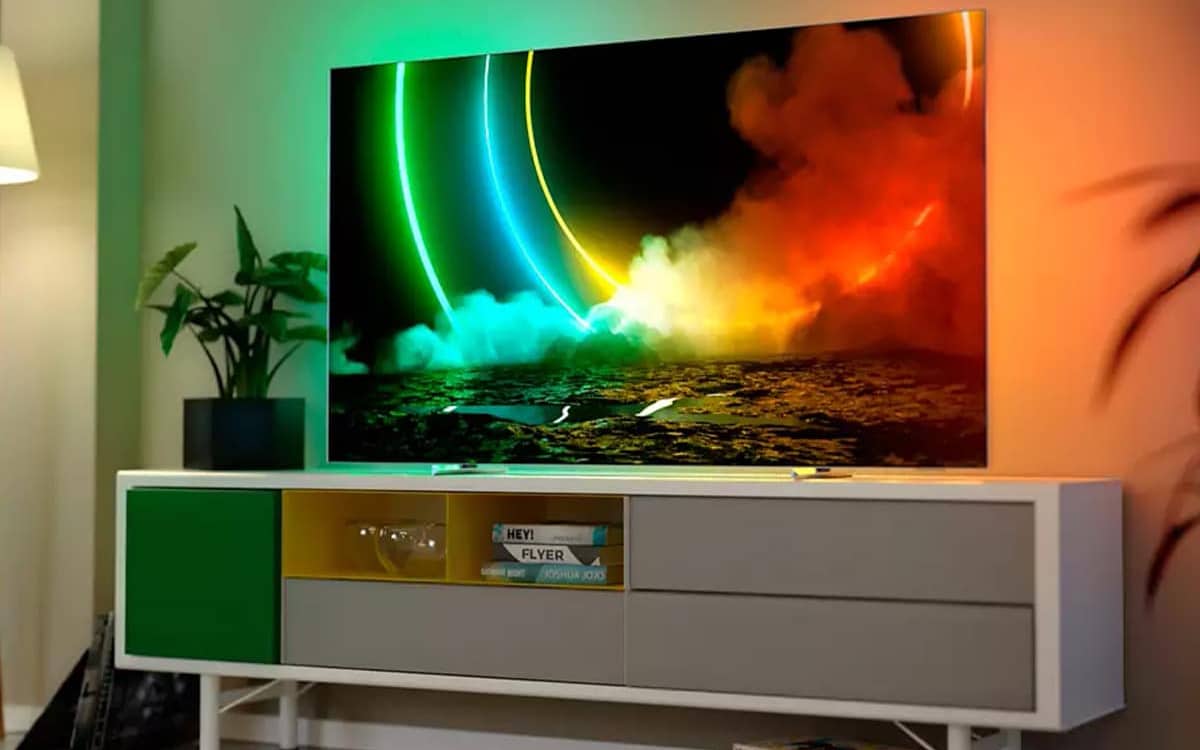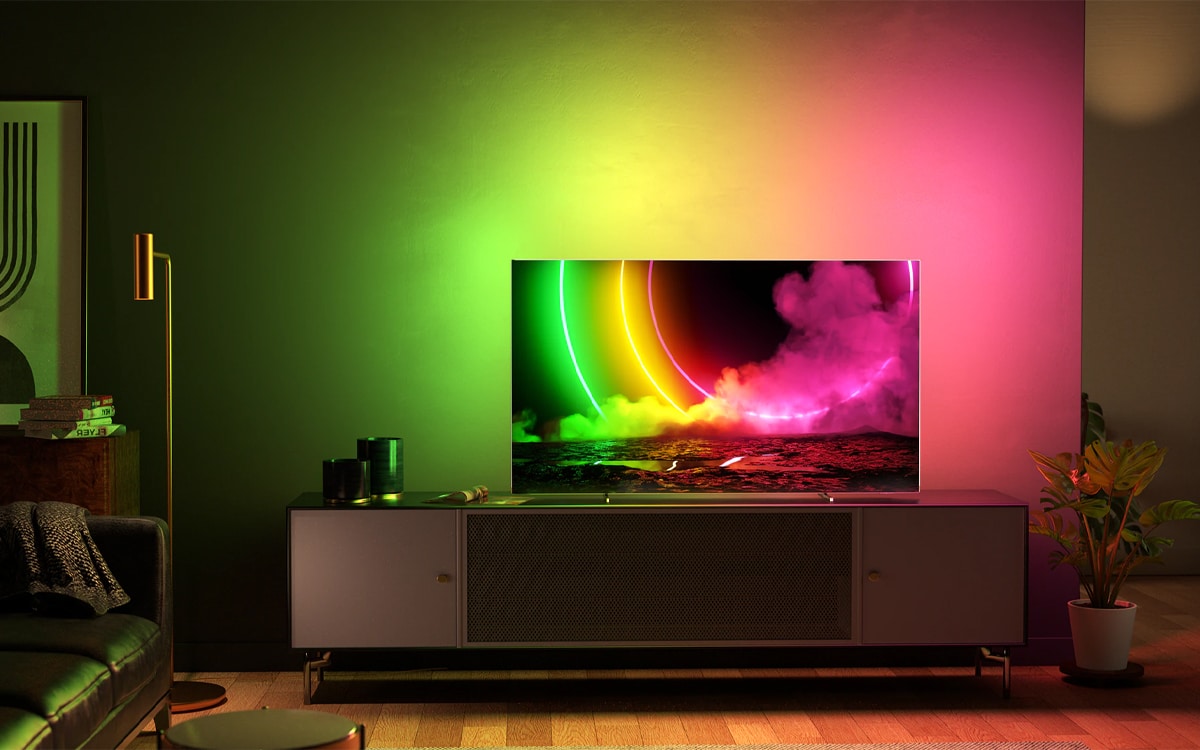You don’t want to simply place your TV in a dull room, devoid of comfortable lighting and any personality. One way many people have gone about improving the area around their TVs is by installing ambient lighting. Many TV manufacturers have taken notice of this, and have begun installing ambient lighting technology directly in a number of their own TVs.
One of these ambient lighting technologies is known as “Ambilight”, and it can be found installed in Philips TVs. Are you still wondering what Ambilight actually is? And what it does to your Philips TV? Then this is the article you’ve been looking for. Let’s shine a light on this unique technology to find out exactly what it is!
What Is Ambilight On Philips TVs?
Put simply, “Ambilight” is an ambient lighting technology that creates ambient light based on what is displayed on the TV screen. Ambilight has actually been around for a number of years and was first patented by Philips around 2002. The time since Ambilight technology was first released has allowed Philips to perfect it!
Ambilight technology found in Philips TVs creates ambient lighting based on the images on screen. This can create the subconscious sense that the screen is much bigger than it is!
In order to produce ambient light, the TV is equipped with intelligent LEDs around the four edges of the screen. These LEDs communicate with the rest of the TV to produce light that matches the content on the screen. Let’s say the image of a blue sky was shown on the TV screen. The LED lights would generate blue light that would shine on the wall behind.
Why Use Ambilight On A Philips TV?
The light produced by Ambilight LEDs is made to always match what is shown on screen. This creates the illusion that the TV’s screen is much larger than it is. This can help to further pull you in. This is especially the case for content that is specially lit. A film scene set during the sunrise would result in warm light being projected against the wall behind the unit. This creates the sense that you are actually there in the scene, hit by the warmth of the early-morning sunlight.
Ambilight not only draws you closer to the action on-screen but also results in a much greater sense of space.
As well as making your content more entertaining, Ambilight can also reduce eye strain. Ambilight projects light onto the wall behind the TV screen. The contrast between a bright TV screen against a dark wall can greatly exacerbate eye strain. By having light shine onto the wall behind the screen, Ambilight is able to keep eye strain at bay!

Is Ambilight Compatible With All Content?
Yes. This is perhaps one of the biggest benefits of Ambilight technology. Because Ambilight technology is installed directly into the TV screen itself, anything that is shown on the screen can be used to create ambient lighting. No matter what input you are using for content, Ambilight will work accurately.
Philips Ambilight truly helps to enhance your television experience. Unlike other external ambient lighting technologies, Ambilight can be used with absolutely any content you want. This is because the ambient lighting technology is installed directly into the TV itself.
This is in stark contrast to many other ambient lighting technologies. Ambient lighting installed by the user needs to be synced to the content that is being viewed. Philips Hue ambient lighting, for instance, needs to be connected to a sync box. The sync box is then connected directly to the input being used to create content for the TV screen. This limits the ambient lighting to what is displayed by the input device.
Frequently Asked Questions
What Is Ambilight On My Philips TV?
Ambilight is an ambient lighting solution installed in select Philips TV models. It produces light that matches the colour displayed on the screen. This results in the sense that a Philips TV screen is much larger than it actually is. Ambilight is a great technology for those with limited space. It can also reduce eyestrain by reducing the contrast between the brightness of the TV screen and the darkness of the rear wall.
Can I Use Ambilight When The TV Is Off?
Yes! One of the best hidden features of Philips Ambilight TVs is the ability to create ambient lighting without any content being displayed on-screen. The feature is referred to as “Lounge Light Mode”. To activate this mode, you will need to first set the TV into standby mode, and wait for around 20 seconds. Once this time has elapsed, grab your Philips TV controller and press the “AMBILIGHT” button.
Should I Turn My TV Off At The Wall Every Night?
While you don’t need to turn your TV off at the wall every single night, it can help to reduce the power usage of your TV. This can then in turn lower your monthly energy bills. Oftentimes, when modern TVs are switched “Off”, they are instead put on a standby mode, ready to turn on at the press of a button. Standby mode thus uses a small amount of energy.
What Is The Meaning Of Ambilight?
Ambilight is simply Philips’ own proprietary version of ambient lighting technology. TVs with Ambilight come with intelligent LEDS built into the rear of the display. These LEDs are able to intelligently react to content displayed on the TV. Let’s say that there’s a largely blue image displayed on the TV’s screen. The LEDS would thus display the exact shade of blue, to create the look of an endless display.






0 Comments